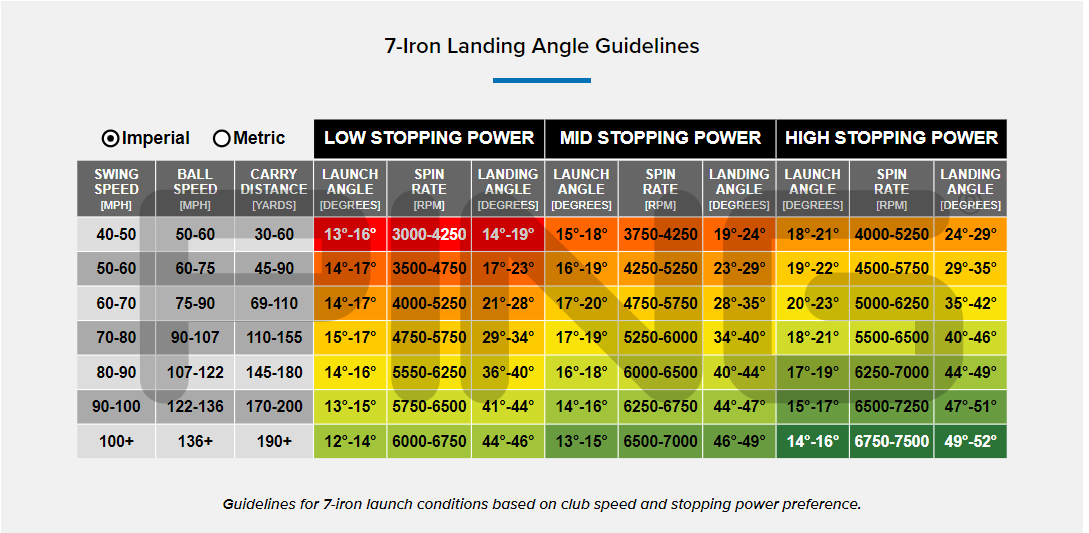For this week's blog regarding irons, we will piggy-back on a great blog written by Chris Broadie, the head of fitting science at PING Golf.
When we are looking for newer irons it’s very easy to get caught in a trap of distance. I mean who really doesn’t want to hit the ball further? However, usually, more distance comes as a result of lowering the loft. Now some companies will argue that the loft needs to be lower due to the fact that they have increased weight in the bottom of the club (to help launch the ball higher) however for most it’s still simply not high enough.
Results from the vast testing database at the PING Proving Grounds reveal the variables that most affect typical 7-iron launch conditions, and topping the list is club speed.
As club speed increases, spin rate and landing angle both increase significantly. This fundamentally changes a player’s expectations. A common goal of a 7,000-rpm 7-iron spin rate simply isn’t practical for all but the fastest swing speeds. For slower swing speeds, the average spin rate is actually closer to 5,000 rpm. A golfer has not necessarily been misfit if their 7-iron spin rate is 5,000 rpm.
Since players with fast swing speeds naturally generate higher spin, a steep landing angle might not be their highest priority in an iron fitting. However, many slower-swing-speed golfers can benefit from more stopping power. In fact, loft adjustments can be as important as lie-angle fitting for iron performance; unique power and retro spec loft options can be used to meet each player’s needs.
The key to understanding, when a golfer can benefit the most from improving their landing angle and stopping power, is highlighted in the chart below. Just because someone has “low stopping power” with their irons does not mean they have to change their fitting. However, if a golfer struggles to hold greens with their 7-iron, then options should be discussed. We would highly recommend the following options: evaluate the iron model and lofts, change launch conditions through shaft weight and flex; and even consider the model of the golf ball to help move the golfer’s low stopping power to mid or even high-stopping power.
The final piece to this discussion is that the standard loft on a 7-iron plays a critical role in these landing-angle guidelines. As you decrease loft, your launch angle and spin rate will certainly decrease. Our guideline is that 1° less loft will increase ball speed by 1.5 mph; decrease launch angle by 0.5° and spin decreases by 200 rpm. In our testing, the average club loft was 32° at 90 to 100 mph club speed but decreased linearly to 30° at 60 to 70 mph club speed. This trend occurs because slower swing speeds tend to fit into lower-lofted game-improvement irons. A bigger deviation from the standard loft will change the chart’s guidelines.
For example, a 65-mph 7-iron club speed golfer testing a 7-iron at 28° (2° lower than standard) can adjust the launch and spin targets down by 1° and 400 rpm using the above tradeoffs.
This chart is an excellent reference point and should act as a baseline line when you're evaluating your current iron set or looking at a new set
Adam


